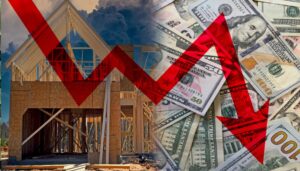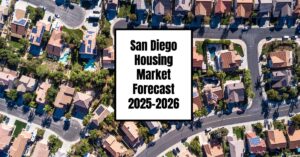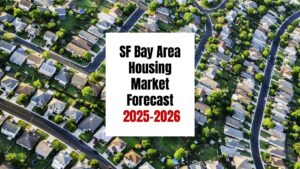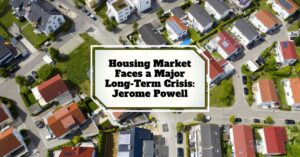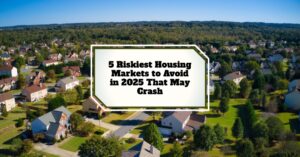The question of how often the housing market crashes is one that weighs on the minds of many homeowners, aspiring buyers, and investors. The simple, yet often unhelpful, answer is that major housing market crashes aren't a regular, predictable event like the changing of seasons.
Instead, significant downturns are triggered by a complex interplay of economic forces, sometimes separated by many years, and importantly, not all downturns are necessarily “crashes.” Understanding the nuances of these cycles is crucial for making informed decisions, and frankly, for sleeping better at night.
How Often Does the Housing Market Crash? A Realistic Look at Cycles and Stability
I've spent a lot of time pondering this very question, especially after living through the significant anxieties of 2008 and observing the more recent shifts in the market. It’s easy to get caught up in the sensationalism of news headlines that scream about impending doom, but the reality is far more intricate.
My experience and research suggest that while the housing market has its ups and downs, the term “crash” implies a rapid, widespread collapse of prices, often fueled by a buildup of unsustainable practices. These events, while devastating when they occur, are not a frequent, scheduled appointment on the economic calendar.
Understanding What Constitutes a “Crash”
Before we dive into frequency, it's vital to clarify what we mean by a housing market “crash.” It's not just a slight dip or a period of stagnation. A true crash typically involves:
- Rapid and Severe Price Declines: Think double-digit percentage drops in home values over a relatively short period.
- High Foreclosure Rates: A significant increase in the number of homeowners unable to make their mortgage payments and losing their homes.
- Tightened Credit Conditions: Banks become much more reluctant to lend money for mortgages, making it harder for people to buy homes.
- Widespread Economic Fallout: These factors often contribute to broader economic problems, such as job losses and reduced consumer spending.
A more common occurrence, and something homeowners are more likely to experience, is a housing market correction or a slowdown. These are periods where price growth moderates or even sees a slight decline, but they lack the extreme volatility and systemic distress associated with a crash. It’s important not to confuse a healthy cooling-off period with an impending Armageddon.
Historical Perspectives on Housing Market Cycles
Looking back at history can provide some perspective, though it’s crucial to remember that past performance is never a guarantee of future results. During my own journey as a homeowner and observer, I've noticed that major downward shifts in the real estate market are often preceded by periods of intense speculation and rapid price appreciation financed by easier-than-usual lending.
Let's consider some notable periods:
- The Great Depression (1929 onwards): While not solely a housing market event, the widespread economic collapse led to massive declines in property values and foreclosures. This was a systemic failure with deep roots.
- The 1970s Recession: Inflation was high, and the housing market saw fluctuations, but it didn't experience a nationwide “crash” in the same sense as later events.
- The Savings and Loan Crisis (late 1980s/early 1990s): This was more of a financial sector crisis that eventually impacted real estate, leading to localized downturns.
- The Dot-Com Bubble Burst (early 2000s): While real estate remained relatively stable during this tech-driven downturn, it's an example of a sector-specific boom and bust.
- The Subprime Mortgage Crisis (2007-2009): This is the most recent and prominent example of a housing market crash in many of our lifetimes. The excessive issuance of subprime mortgages, combined with complex financial instruments and a housing bubble, led to widespread foreclosures and a severe recession.
If we look at this timeline, the significant, nationwide crashes are relatively infrequent. The period between the S&L crisis and the 2008 crisis was about 15-20 years. The period before that is also measured in decades. However, it's important to note that regional markets can experience significant downturns more frequently due to local economic factors, such as a major employer leaving a town or a natural disaster.
Factors That Contribute to Housing Market Crashes
Several ingredients generally need to come together for a housing market to truly crash:
- Asset Bubbles: This is perhaps the most critical factor. A bubble forms when asset prices rise significantly faster than their intrinsic value, fueled by speculation and easy money. People buy houses not because they need them or can comfortably afford them, but because they expect prices to keep rising.
- Easy Credit/Loose Lending Standards: When it becomes too easy for almost anyone to get a mortgage, often with little to no down payment and for properties they can't truly afford, this fuels demand for housing beyond sustainable levels. Think of the “subprime mortgages” that were a hallmark of the 2008 crisis.
- Overbuilding and Supply Imbalance: If developers build far more homes than the market actually needs, this can lead to an oversupply that weighs down prices, especially if demand falters.
- Economic Shocks: A sudden recession, high unemployment, a major financial crisis, or even significant geopolitical events can trigger a decline in housing demand and, if the market is already stretched, can lead to a crash.
- Investor Speculation: When a large number of people start buying properties solely to flip them or rent them out for profit, hoping for rapid price appreciation, this can inflate prices and create an unstable environment upon any slowdown.
Are We Headed for a Crash Now? My Perspective
This is the million-dollar question, isn't it? As someone who watches the market closely, I can tell you there's a lot of chatter about a potential downturn right now. Factors like rising interest rates and lingering inflation have certainly put the brakes on the rapid price growth we saw a few years ago. We're seeing some markets cool off, and home prices might stagnate or even dip slightly in certain areas.
However, what I'm not seeing are the same levels of reckless lending and rampant, irrational speculation that characterized the lead-up to 2008. Lenders today are generally much more cautious about who they approve for mortgages. Many homeowners also have significant equity in their homes thanks to the appreciation of the past decade, meaning they're less likely to be caught in a negative equity situation akin to foreclosing immediately. The supply of homes also remains a significant issue in many areas; there still aren't enough homes for everyone who wants one.
My personal take is that we're more likely to see a healthy market correction or a period of slowdown rather than a full-blown crash. This means slower price growth, potentially some price declines in overvalued markets, and a more challenging environment for buyers as interest rates remain elevated. This cooling phase, while potentially uncomfortable for those who bought at the peak, is often a necessary part of a sustainable market cycle, allowing supply to catch up with demand and prices to align more closely with economic fundamentals.
What Differences Matter: Crash vs. Correction
It's crucial for everyone, from first-time buyers to seasoned investors, to grasp the distinction between a housing market crash and a correction.
| Feature | Housing Market Crash | Housing Market Correction |
|---|---|---|
| Price Change | Rapid, steep, and widespread declines (often >10% nationally) | Gradual moderation or modest declines (-5% to -10% in some areas) |
| Lending | Loosened to extremely loose; leads to defaults and foreclosures | Generally tighter, more responsible lending; fewer widespread defaults |
| Foreclosures | High and widespread | Moderate, generally tied to individual financial distress, not systemic issues |
| Economic Impact | Severe recession, job losses, banking crisis | Mild economic slowdown, potential job market cooling |
| Duration | Can be prolonged and have wide-ranging effects | Shorter and more localized in impact |
| Cause | Asset bubble, toxic debt, systemic financial issues, economic shocks | Overvaluation, interest rate hikes, supply/demand imbalances, general market cooling |
How Often Do Housing Markets Slow Down?
While a crash might happen every few decades, housing market slowdowns or corrections are considerably more frequent. You might see a market slow down every 5-10 years to some extent, depending on local economic conditions, interest rate policy, and demographic shifts.
For instance, after a period of rapid price growth, it's natural for the market to cool off. Buyers might become more cautious due to higher prices or rising interest rates. Sellers might have to adjust their expectations. This can lead to:
- Longer time on market for homes.
- Fewer bidding wars.
- Slightly lower sale prices compared to the peak.
These periods are a sign of a healthy market recalibrating, not collapsing. They allow for rebalancing and affordability to improve over time.
What This Means for You: Navigating the Market
So, how do we make sense of all this? My advice is always to focus on what you can control and to approach real estate with a long-term perspective.
- Focus on Affordability: Never buy more house than you can comfortably afford, even if lenders approve you for more. Factor in unexpected expenses, potential job loss, and rising costs.
- Long-Term Investment: I've always viewed real estate as a long-term investment. If your timeframe is 7-10 years or more, short-term market fluctuations become less concerning. You're buying a place to live, and hopefully, appreciate in value over time.
- Understand Your Local Market: National trends are important, but local conditions dictate your specific experience. Research the employment situation, population growth, and local development plans in the area you're interested in.
- Maintain an Emergency Fund: A robust emergency fund is your best defense against unexpected financial downturns, whether they affect the housing market or your personal finances.
- Stay Informed, Not Panicked: Keep up with economic news and housing market reports from reputable sources, but avoid succumbing to fear-mongering. Distinguish between genuine warning signs and speculative predictions.
Ultimately, how often does the housing market crash is a question with an answer that varies depending on how you define “crash.” While devastating, widespread collapses are relatively infrequent, characterized by systemic issues and extreme price drops, the market does experience natural cycles of growth, slowdown, and correction. By understanding these cycles, focusing on long-term affordability, and staying informed, you can navigate the real estate world with greater confidence, ride out any inevitable dips, and hopefully, build lasting wealth.
Invest in Real Estate in the Booming Markets of the U.S.
Discover high-quality, ready-to-rent properties designed to deliver consistent returns.
Contact us today to expand your real estate portfolio with confidence.
Contact our investment counselors (No Obligation):
(800) 611-3060
Recommended Read:
- Housing Market Turmoil: Prices Hit an All-Time High, But Sales Drop
- 20 Worst Housing Markets Facing Biggest Price Crash or Correction by 2026
- Housing Market Faces a Major Long-Term Crisis: Jerome Powell
- Housing Market Forecast 2026: Will Prices Rise or Fall Next Year?
- Housing Market Predictions: Home Prices to Drop 1.4% in 2025
- Housing Market Alert: Over 600 Metros Will See Prices Decline by 2026
- 12 Housing Markets Set for Double-Digit Price Decline by Early 2026
- Real Estate Forecast: Will Home Prices Bottom Out in 2025?
- Why Real Estate Can Thrive During Tariffs Led Economic Uncertainty
- Will There Be a Real Estate Recession in 2025: A Forecast
- Will the Housing Market Crash Due to Looming Recession in 2025?
- 4 States Facing the Major Housing Market Crash or Correction
